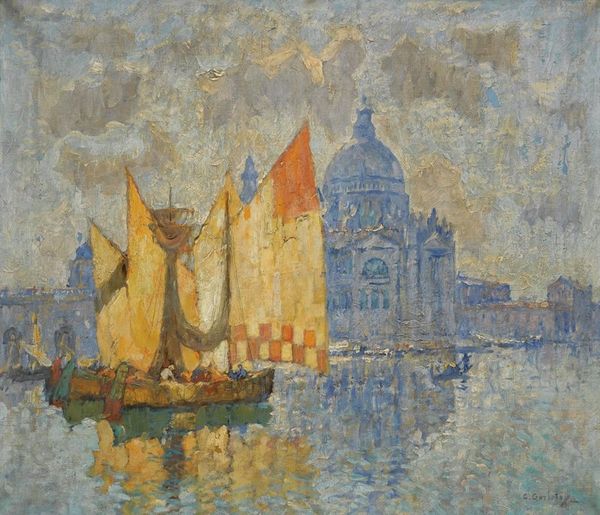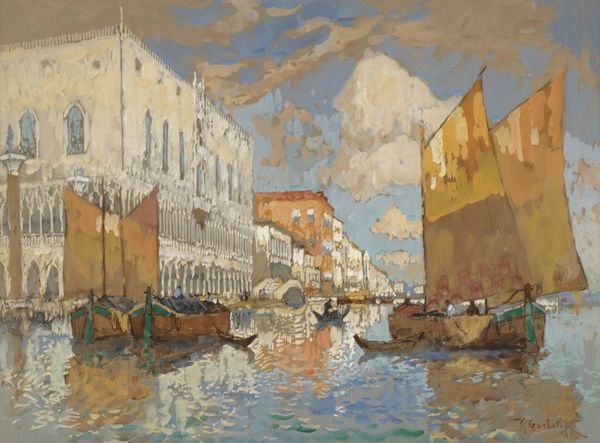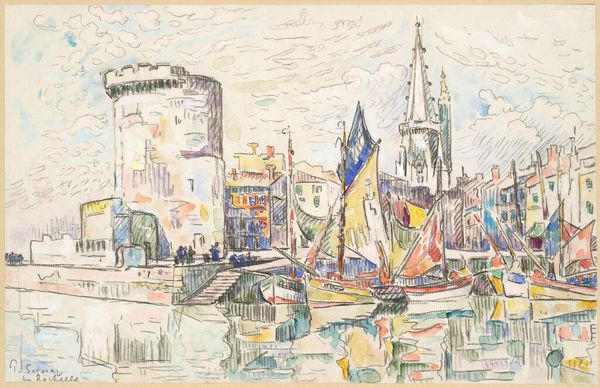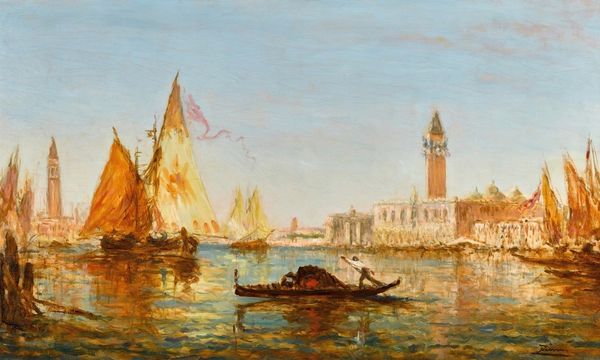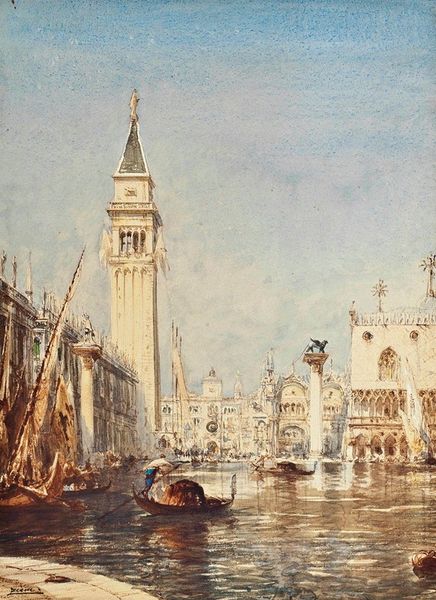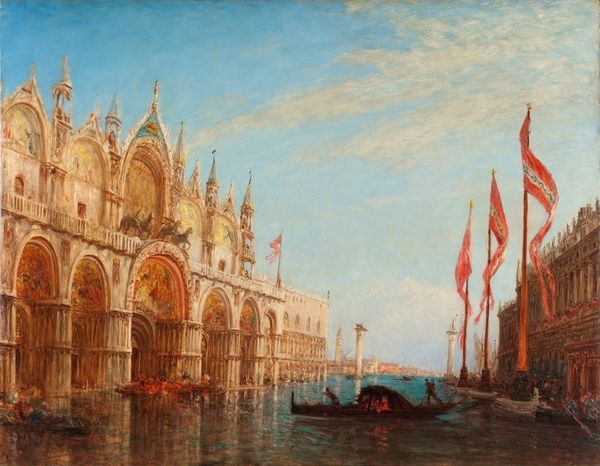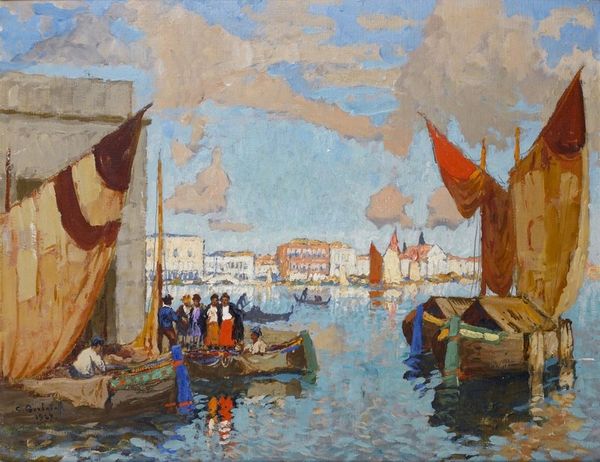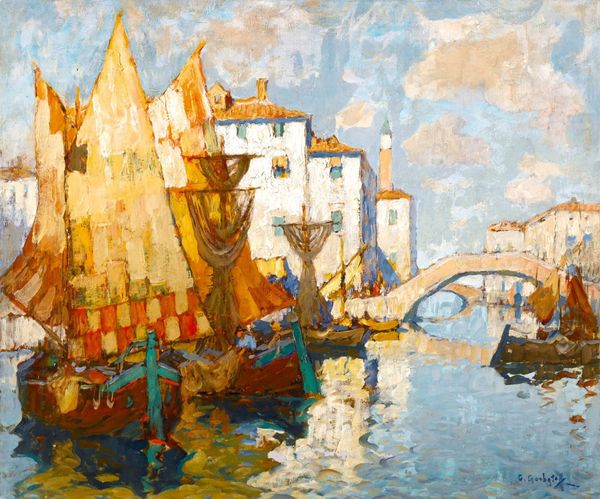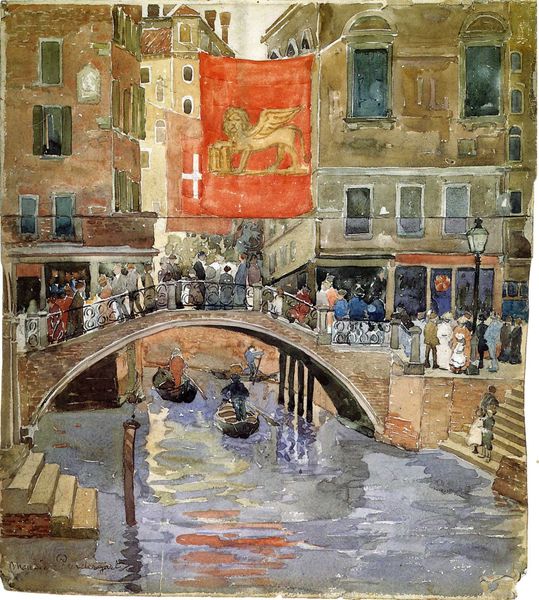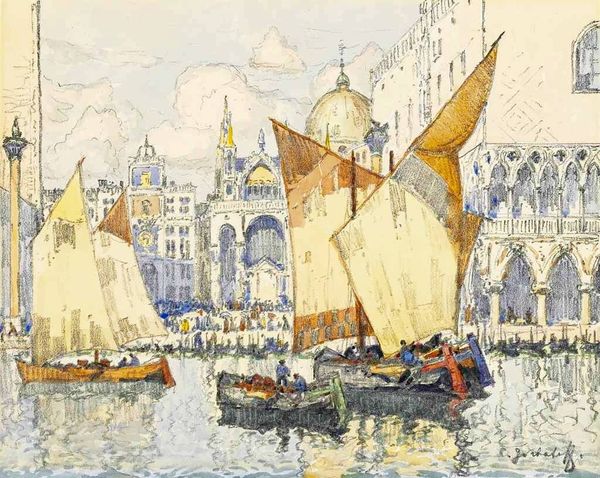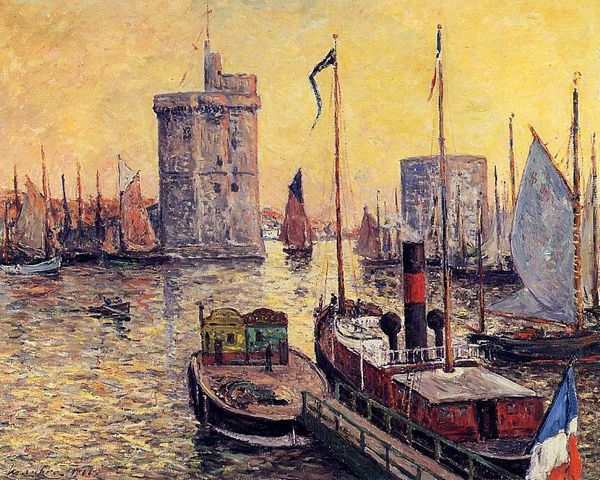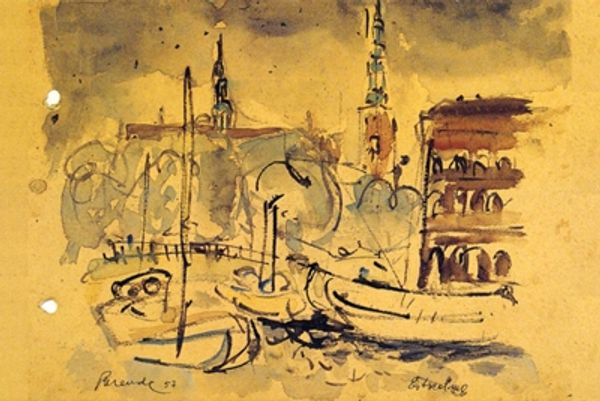
Copyright: Public domain
Editor: Here we have Konstantin Gorbatov’s "The Doge's Palace, Venice," painted in 1914 using oil paints. It has such a breezy and reflective ambiance. I find my attention is drawn to how the shapes and colours come together. What do you see in this piece from a formal perspective? Curator: I see a sophisticated manipulation of form and colour designed to evoke a particular emotional response. Note the impasto technique; the thick application of paint lends a tangible texture to the canvas, building form through carefully placed daubs of colour. Consider, also, the limited palette – primarily earthy tones accented by muted blues and reds. This isn't a literal depiction of Venice, but rather a construction of it. How do these stylistic elements affect your understanding? Editor: I think they capture a kind of wistful beauty. The looser brushstrokes soften the details of the Doge's Palace, giving it an ethereal quality. But I wonder if the composition contributes to that as well? Curator: Precisely! Examine the placement of the palace itself. Gorbatov deliberately obscures the architectural details, contrasting with the boats in the foreground, doesn't he? What sort of relationship do you see forming between the two through that distinction? Editor: It creates a dynamic tension between near and far, tangible and intangible. The painting isn't about precise architectural details; it prioritizes a sense of place and atmosphere. I like how you explained his manipulation of form and color! Curator: And I appreciate your close observation on the relationship between tangible form and spatial perspective. Considering the structural elements of the composition provides insights that might be overlooked.
Comments
No comments
Be the first to comment and join the conversation on the ultimate creative platform.
